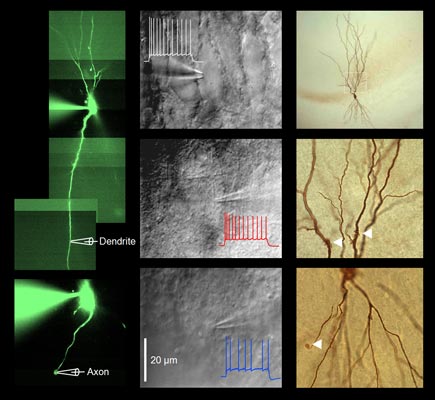March 4, 2012
New insight in dendritic computation
Group of IST Professor Peter Jonas analyzes dendritic function of CA3 pyramidal neurons in the hippocampus • Publication in Nature Neuroscience

The human brain is comprised of approx. 10 billion neurons with a vast array of different functions. Communication between neurons occurs at specialized sites of contact, so called synapses, at which electrical signals are transformed into chemical signals and transmitted from the axon of one neuron to the dendrite of another neuron. Signals impinging on neurons from different synaptic partners are integrated and lead to an appropriate output, such as the transmission of the signal to another neuron or an effector such as a muscle. CA3 pyramidal neurons in the hippocampus are critical for the processing of spatial information and memory formation. Their dendrites receive input from three different groups of neurons through glutamatergic synapses. The undoubtedly complex information processing by the CA3 dendrites is currently not well understood, for there is a need to first characterize the properties of CA3 dendrites. However, this has been prevented so far by experimental difficulties, as in vitro preparations – the “workhorses” of cellular neuroscience – are difficult to maintain and CA3 dendrites are particularly small. In their Nature Neuroscience Advance Online Publication from March 4, the Jonas group presents the first analysis of dendritic function of CA3 pyramidal neurons by subcellular patch-clamp recording, giving insights in how these dendrites provide computational power in the hippocampus.



